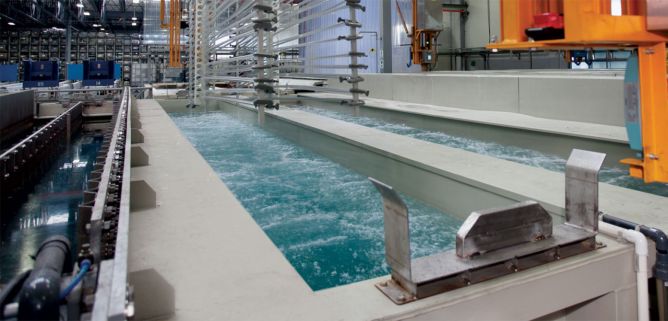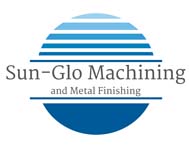Anodizing, whether you are looking at type I, type II, or Type III Anodizing Services, is a process where aluminum is electrochemically processed to form a thicker layer of aluminum oxide. The process involves the immersion of aluminum into an acid electrolyte bath to allow an electrical current to be passed through the medium. Cathodes are the negatively charged electrode by which electrons enter an electrical device, and they are located on the sides of the anodizing tank. The aluminum pieces act as an anode, which is the positively charged electrode by which the electrons leave a device. Oxygen ions are then released from the electrolytes to combine with the aluminum atoms at the surface of the part being anodized.
The Three Types of Anodizing Services
Anodizing aluminum alloys increases corrosion resistance, allows coloring, increases lubrication to prevent irritation of threaded components, and improves adhesion. There are three types of anodizing services. Type I is chromic acid anodizing; it is the preferred method for anodizing aluminum parts that are to be revised together or that form lap joints. Type II is commercial anodizing or room temperature anodizing. It is the most popular form of anodizing aluminum and is used to anodize components for high rise buildings and spaceships. Type III anodizing services is used when a material needs a thicker, denser, and more resilient coat. This method is used for a range of services, including aluminum cookware and military applications.
The Benefits of Type III Anodizing Services
Type III anodizing services are obtained by using an electrolyte of sulfuric acid at a low temperature, in conjunction with a high voltage and current density. Through this process, a film thickness of 0.002” to 0.004” can be achieved, and that offers a surface coating with hardness characteristics second to diamonds. The other benefits of Type III anodizing services include:
• Higher quality material that results in less replacement demand.
• Ability to repair a surface or rebuild components that would otherwise have to be replaced.
• Hard coat anodized surfaces have a high degree of lubricity and are abrasion resistant.
• Strong corrosion resistance that can be further improved by using an appropriate sealing process. However, if the main function of the type III anodizing service is to produce the maximum degree of abrasion or wear resistance, do not follow through with a sealing process.
• Type III anodizing services offers the greatest electrical insulation and is flame resistant.
• Depending on the alloy, the natural coloring varies from charcoal to dark bronze. Black is available as the only custom color.
• The coating becomes part of the component, 50% of which actually penetrates into the base metal while the other 50% of the coating builds up on the surface.
Important Note
Because hard coating adds a thicker coat to aluminum, it is important to add room for this into the dimensions of your design. In the case of a design with tighter dimensions, it is possible to control the thickness of the coating to get more accurate measurements. Contact the experts to make sure you get the best coating possible for your products or equipment, whether you need type III, type II, or Type I Anodizing Services.

